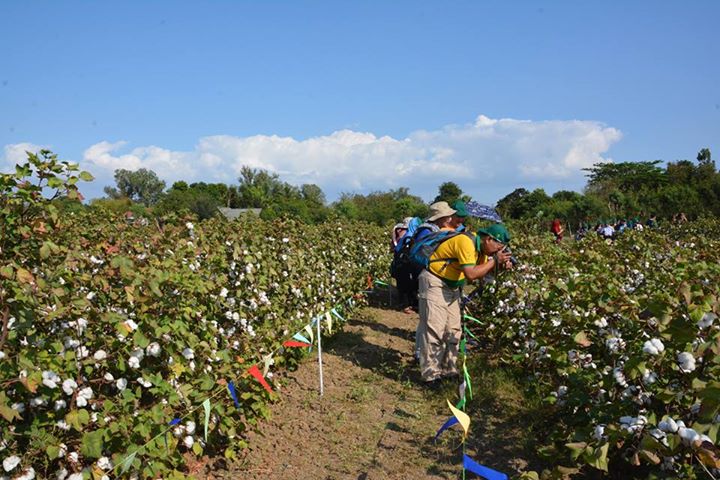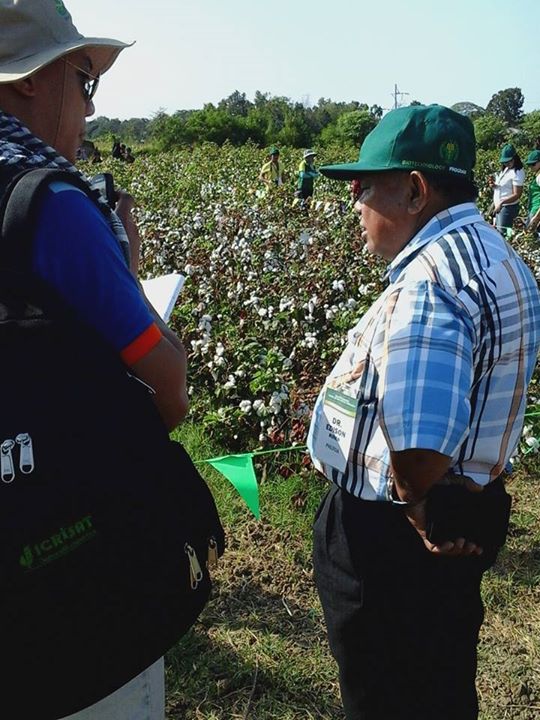
Following a multi-year slump, the Philippine cotton industry is anticipating a renaissance through the help of an innovative, science-based crop that farmers began planting this month.
With the introduction of the Bt cotton variety, revival of the local cotton industry is very likely, according to Edison Ri en, regional director of the Philippine Fiber Industry Development Authority (PhilFIDA). The country currently imports all of the cotton required by the local textile industry.
Bt cotton has been genetically engineered to resist the dreaded bollworm (Heliothis armigera), a destructive pest that is partly responsible for the decline of the country s cotton industry. The crop technology largely replaces the need to control the bollworm through applications of synthetic chemical pesticides, which cause harm to human health and the environment, Ri en said.
The Bt variety is being cultivated in experimental areas as PhilFIDA works on securing approvals for commercial release of the seeds. This year, 26 farmers in Ilocos Norte and a growing number of farmers in Pangasinan are expected to plant Bt cotton, Ri en said.
Alejandro Romero, a farmer in Ilocos, is eager to plant the Bt variety because he believes that it will give him better income by reducing the need for production inputs like pesticides. He plants cotton after harvesting rice, taking advantage of two cropping cycles. Comparing yields of both crops, he attested that his gross annual income of about US $7,000 from cotton is more than double the value of his rice crop. With a minimum capital of approximately US $600 per hectare, planting cotton as an alternative crop is very encouraging because it is not labor intensive and it can be harvested after a four months, he said.
Bt cotton includes a gene derived from the soil bacterium Bacillus thuringiensis (Bt), which produces a protein that is toxic only to the newly hatched bollworm larvae that attack cotton, Ri en explained. That means the Bt protein would not affect non-target organisms because its toxic effect is specific only to the bollworm pest.
Based on initial experimental results, Bt cotton has better resistance against the bollworm larvae than non-Bt cotton varieties. Five Bt cotton varieties were tested and compared with one non-Bt (UPLG2) cotton on field trials at the PhilFIDA station in Ilocos Norte. PhilFIDA has concluded the multi-location field trials of Bt cotton in Luzon and Mindanao Philippines two largest islands and results proved to be promising in reviving the local cotton industry.
Cotton production in the Philippines is an old age tradition, starting even before pre-Spanish times. Native varieties were grown in the Ilocos, Batangas, the Bicol region and the Visayas. But it s been in decline since the early 1990s, when the country had 38,000 hectares planted in the crop, according to PhilFIDA. Currently, locally produced cotton costs more than imported cotton, prompting the local textile industry to import the commodity.
But that could change with the adoption of Bt cotton, which promises lower production costs for farmers and consistent supplies for the textile industry.
Farmers also are guaranteed to produce more cotton using the biotech variety. While farmers usually get maximum of two tons per hectare in planting non-Bt cotton, five to six ton per hectare is attainable with Bt cotton, said Rinen.

Another benefit observed in using Bt cotton instead of non-Bt cotton variety is the great reduction in the use of pesticides. Less chemical pesticide use translates to lower production cost, enhanced safety and health of workers and fewer impacts on the environment. By growing Bt cotton, rather than applying pesticides, farmers can help preserve the populations and effectiveness of beneficial insects as pest control agents, while reducing risk to other wildlife and impacts on water quality from insecticide runoff.
Once Bt cotton is commercially released and its effectiveness in controlling bollworm could be demonstrated to the farmers, Bt cotton could trigger the renaissance of Philippine cotton industry, Ri en said. India and other cotton producing countries have already shifted to Bt cotton.
PhilFIDA is currently targeting a maximum of 800 hectares for cotton production. Two-thirds of the area will be planted with Bt cotton in the provinces of Ilocos Norte, Pangasinan, Tarlac, Nueva Ecija, and areas in Mindanao.
The Bt cotton project, which started in 2009 has undergone various stages: greenhouse evaluation (2009-2010), confined field tests (2010-2011) and multi-location field tests (2012-2015). It is now moving into the propagation phrase.
Now that multi-location field trials are finished, PhilFIDA has applied to the Department of Agriculture – Bureau of Plant Industry (DA-BPI) for approval to make Bt cotton commercially available to farmers.
During the first year of commercialization, the benefits of Bt cotton will be demonstrated to the farmers from Luzon to Mindanao, Ri en said. At the same time, the Bt gene will be integrated to local cotton varieties, he added.
Hopefully techno demo (technology demonstration) on Bt cotton can commence in various areas throughout the Philippines, Ri en said.
Techno demonstrations will be done with cotton producers in the provinces of Ilocos, Pangasinan, Nueva Ecija, Sarangani and South Cotabato involving 40 one-hectare farms. It will provide a venue to educate the farmers, stakeholders and government officials about Bt cotton technology and rally for their support.
Marlo Asis is a 2015 Alliance for Science Global Leadership Fellow.
